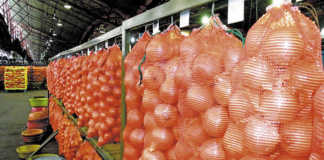
Photo: FW Archive
What is the function of the Egg Organisation?
The South African Poultry Association (SAPA) was established in 1904. At SAPA’s request, the Egg Control Board was established in 1951, but was later done away with during the deregulation of the control boards.
The Egg Organisation, a subsidiary branch of SAPA, was then formed. It is responsible for promoting, developing and guiding the commercial egg industry, including small- and large-scale egg producers.
How many egg producers are there in South Africa, and how important is the informal market for egg production?
There is a significant number of producers spread across most provinces, with some registered as SAPA egg members. About 50% or more of the eggs produced are channelled through the formal markets, with 40% to 50% being sold on the informal markets.
Where does South Africa stand in terms of trade?
In the 2020/21 marketing year, South Africa exported about 10 750t of eggs at an estimated R306,6 million, with Mozambique as the main destination. In the same period, a minimal quantity of table eggs was imported. However, fertile breeding eggs and dry egg powders were imported mainly from Europe and the US at a cost of around R66,9 million.
What are the greatest challenges facing producers?
Egg producers face a number of challenges. The first of these is biosecurity measures
at national level. Control measures governingthe movement of people and goods across
borders help control the spread of disease from one area to another, which is important for the egg industry.
The second challenge is domestic economic performance, including the inflation of major production inputs such as feed.
Feed accounts for approximately 70% of an egg producer’s input costs, and the local prices of grains and oilseeds are based on global prices.
Thirdly, the egg industry is interlinked with other sectors such as the maize, soya bean and sunflower industries, as well as the tourism and hospitality sectors. If any of these industries face problems, egg produceers can also be affected.
Finally, the cost of electricity, fuel and wages also affects the industry, with the supply and demand of eggs largely determining the price.
What are the biggest opportunities for producers and the egg value chain?
When looking at poverty levels and the affordability of basic food for most South Africans, egg producers pride themselves on being able to provide most of the population with an affordable source of protein, which can be enjoyed at any time of the day and in a variety of ways.
The increasing size of the population provides an opportunity for growing per capita consumption. Another opportunity for producers is the current development of the Agricultural and Agro-Processing Master Plan.
Once this strategic plan is concluded and endorsed by all social partners involved, the shape and landscape of the agriculture sector at large is likely to change the status quo and provide better opportunities for producers and egg value chain participants. The levelling of the playing fields across Southern African Development Community countries may also open new export markets for egg producers.
How can we ensure the sustainability of the egg industry?
A basic strategy for protecting the local industry from imports and, as far as possible, preventing disease outbreaks, such as the highly pathogenic avian influenza, is needed to ensure the sustainability of the egg industry.
This strategy needs to be followed to ensure there is more collaboration between the public and private sectors, especially when it comes to opening new markets for producers.
For the industry to remain sustainable and become more competitive, local production of egg powders should be encouraged, and South Africa should avoid importing these products as much as possible.
The egg industry collects statutory levies to ensure that it remains competitive through the implementation of various programmes, including generic egg marketing and encouraging the consumption of eggs, consumer education, research and development, quality assurance, and providing industry role players with relevant and accurate information.
What is the worst-case scenario for the egg industry 10 years from now?
A reduction in the consumption of eggs on the local market, as this will mean less market
space for domestic producers. There needs to be a high local demand for eggs. South Africans consume between 150 and 159 eggs per capita each year.
People in some of our BRICS member countries, such as China and Russia, eat 293 to 306 eggs per capita each year. Our industry needs to invest in encouraging the consumption of locally produced eggs.
What are the minimum standards for an egg-grading system in terms of quality and size?
Eggs in South Africa are classified as Grade 1, Grade 2 or Grade 3. Eggs that don’t comply with the standards for grading are not presented for sale. In South Africa, the standard sizes are Super Jumbo, Jumbo, Extra-large, Large, Medium, Small and Mixed, and this is determined by the weight per egg on a scale of between 33g and 72g.
In terms of quality, the following standards are applicable: soundness, cleanliness, shape and texture of the shell, and yolk and egg white quality.
What is the impact of bird flu on the egg production industry?
The current outbreak of avian influenza is having a negative impact on some egg producers, and the entire industry is on high alert. We estimate that between 2% and 3% of the national layer flock has been hit by the outbreak, resulting in about 800 000 birds being affected.
Fortunately, the industry learnt from the previous outbreak in 2017 and is well advanced in ensuring that the spread of the outbreak is contained and controlled. There is a strong working relationship between government and the industry to ensure that regulations and strict biosecurity measures are followed.
Email Dr Abongile Balarane at [email protected].










